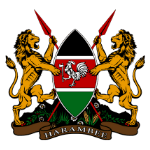Background
In 2016, ALMA in partnership with WHO, Measure Evaluation, AMREF, PMI, PATH, CHAI, MSH and Kenya Medical Research Institute (KEMRI) supported the Ministry of Health in the development of Malaria Scorecard for accountability and action. In 2019, the country launched a new and ambitious Kenya Malaria Strategy (KMS) 2019 to 2023 aimed at consolidating gains and further reducing the burden of disease. Scorecard indicators have been revised to reflect the evolving national malaria priorities as envisioned in the KMS that lays more emphasis on malaria surveillance. The scorecard has been decentralised to both lake and coastal endemic counties, which are the highest burden regions of the country, and plans are underway for further decentralisation to highland epidemic prone counties.
How it works
The malaria scorecard is populated at the national level using Kenya Health Information System II (KHIS2). It is analysed at national and county levels, bottlenecks identified, and action taken to improve performance. The national and county malaria teams use the scorecard action tracker to monitor implementation of actions and strengthen accountability.
Impact
Service delivery improvements
Low coverage of LLINs and IRS were identified by the ALMA scorecard as areas requiring action. The root cause of the problem was identified as withholding of malaria commodities at the port due to delayed payment of taxes for nets, IRS and other commodities. The issue was dealt with at the highest level by the cabinet resulting to setting aside of resources for prompt payment of taxes by the government.
In terms of policy changes, insecticide resistance was identified as the main contributor to high malaria incidence, occasioned by delayed approval in using new insecticides. A formal request was made to include a public health expert in the approval board to fast-track approvals for public health commodities. In 2021 IRS will use a new insecticide (from Actellic to Fludora fusion). Additionally, the larval source management (LSM) project – a collaboration between the Cuba and Kenya government – has been initiated to reduce malaria incidence in target endemic counties.
The malaria scorecard is used at the county level to plan for commodities. Counties are also able to identify stock outs of malaria commodities using the scorecard and reach out to the national malaria programme for replenishment. The scorecard is also used during biannual regional review meetings with the counties. These meetings discuss performance of the indicators in the scorecard, identify bottlenecks and recommend actions that are then included in the county action plans and continuously monitored.
Key success factors
- The scorecard is part of the ALMA chair legacy agenda.
- Use work plan manager
- Integrated into KHIS2 which allows easy population every quarter.
- Action tracker used to enhance accountability at national and county level.
